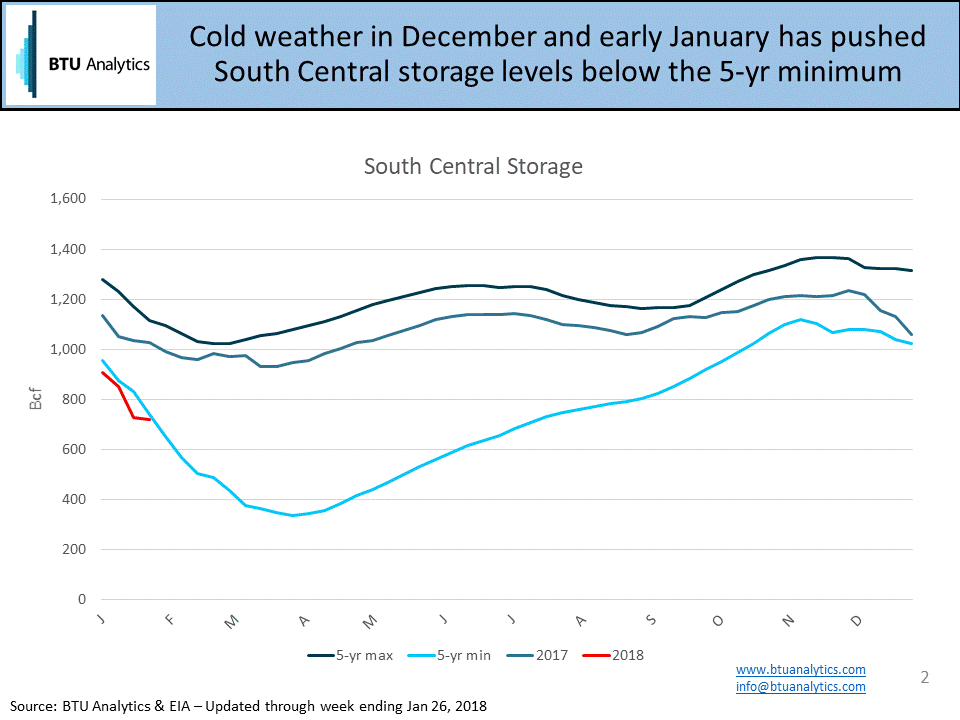Starting out with a warm 2017/2018 winter, sub $3.00/MMBtu Henry Hub prices were expected to help avoid a natural gas storage surplus and incentivize some demand. However, weather can quickly change the situation, and a cold spell in early January has moved storage levels near the 5-year minimum for the week ending January 26th. Now with some forecasts calling for a polar vortex to hit in the next 5-10 days, the US could be facing end of season natural gas storage levels even further below normal. In this two-part series, BTU will cover gas storage issues around the possible polar vortex, which gas demand regions will see the greatest effects, and how supply and pricing need to react through the summer.
End of season natural gas storage levels are fundamental to understanding supply, demand, and pricing dynamics looking forward over the next season. High storage levels, such as those seen last year, along with supply growth can put pressure on prices and help incentivize demand. Conversely, worries of a cold winter and low ending storage levels can provide the short-term pricing uplift currently being seen as Henry Hub prices averaged over $3.50/MMBtu for January.
The chart below shows historical natural gas storage levels along with BTU Analytics’ forecast for 2018. While the current base case assumes moderate impacts from the polar vortex during the first half of February, there is significant risk to seeing a lower season-ending storage number if the cold weather persists for longer than expected. To understand the potential impact, a more intense polar vortex scenario was run through our natural gas supply and demand model which assumes a cumulative February draw above 750 Tcf. For comparison, this draw would be in line with some of the larger storage draws seen in the 2014 and 2015 polar vortex draws. If this scenario materializes, end of season levels in March could drop from the current BTU Analytics base case to 1.1-1.25 Tcf.

Keep in mind that effects across the US will vary and an important factor for supply and price reaction in 2018 will be where regional storage comes in relative to normal. In January, nearly 65% of the storage draw came from the South Central region. The chart below shows that 2017 was tracking well above the five-year minimum levels until December. With the continued cold weather in early January, South Central storage levels have now fallen below the recent lows and a cold February could exacerbate the situation further. While other storage zones in the US experienced draws, none were hit as hard as the South Central region.

This has the potential to cause issues as the majority of incremental US supply is expected to originate from the Permian and the Northeast, which may be pipeline constrained and unable to efficiently refill storage in the south (More on this in part 2 of this market commentary and our What Lies Ahead Conference in three weeks). Therefore, where the polar vortex hits hardest this month is important. Further draws in the South Central area could set up very strong Henry Hub pricing and weaker basis prices this summer. However, the worst of the vortex is currently expected around the Midwest and East regions.
Keep an eye out for part 2 of this analysis where we will dive in deeper to discuss how these factors come into play on the supply side. For more information on BTU Analytics’ natural gas demand views, request a sample of the Henry Hub Outlook report.









